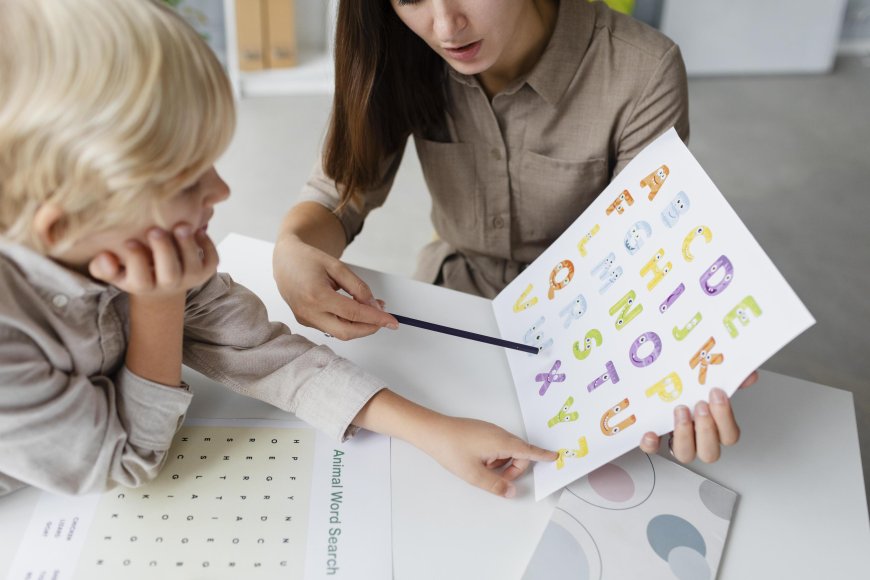See It, Say It, Match It: Montessori Alphabet Game
Discover how the Montessori alphabet game "See It, Say It, Match It" helps children build phonics skills through visual, verbal, and hands-on learning. Ideal for early literacy development. Ask ChatGPT

Early literacy is not just about learning the ABCsit's about understanding the sounds, symbols, and meanings behind each letter. In Montessori education, the path to reading and writing is paved with engaging, hands-on activities that appeal to a child's natural curiosity. One such activity is the Montessori Alphabet Game known as See It, Say It, Match It, a playful phonics game that helps young learners build strong language foundations while having fun.
This game perfectly captures the Montessori philosophy: learning through the senses, encouraging independence, and developing skills through purposeful play. In this article, we explore how See It, Say It, Match It supports early literacy, how its used in Montessori classrooms, and why its becoming a key part of the curriculum in many early learning environments, including a preschool in Madipakkam and other child-centered educational spaces.
What is the See It, Say It, Match It Alphabet Game?
The See It, Say It, Match It game is a Montessori-inspired activity designed to help children associate letter symbols with their corresponding phonetic sounds and real-world objects. The name itself captures the learning process:
-
See It The child sees a letter card or sandpaper letter.
-
Say It They pronounce the letters sound (not the name).
-
Match It They find and match a miniature object or image that begins with that sound.
For example, a child might:
-
See the letter B
-
Say the sound /b/
-
Match it with a toy ball
This interactive, multi-sensory process taps into visual recognition, auditory processing, and tactile explorationall essential components of early language development.
The Montessori Approach to Early Literacy
Montessori education emphasizes phonetic awareness over memorization. In many traditional settings, children first learn the names of letters before understanding their sounds. Montessori flips this approach by teaching phonetic sounds first, which better supports a childs ability to decode words when they start reading.
The See It, Say It, Match It game fits seamlessly into this approach. By actively engaging with letters and sounds, children form stronger connections between spoken and written language.
The game also allows for repetition and self-correction, both critical in Montessori learning. Children can revisit the game whenever they choose, allowing them to reinforce concepts without pressure. This independence fosters confidence and joy in learning.
Why It Works: Learning Through the Senses
Children in the early years learn best through sensory experiences. This game engages three key senses:
-
Visual Recognizing and identifying the shape of the letter.
-
Auditory Saying the correct phonetic sound aloud.
-
Tactile Handling physical objects and matching them with letters.
This multi-sensory method enhances memory retention and makes abstract concepts like letters and sounds more concrete. The combination of see it, say it, match it becomes a mental pattern that supports future reading and spelling skills.
Language and Cognitive Development Benefits
Beyond phonics, the See It, Say It, Match It alphabet game offers a wide range of developmental benefits:
1. Phonemic Awareness
Children learn to isolate beginning sounds in words, which is the first step in blending and decoding.
2. Vocabulary Building
By interacting with real objects (like iguanas, cups, or nests), children expand their vocabulary naturally.
3. Cognitive Skills
The process of selecting and matching encourages logical thinking and decision-making.
4. Fine Motor Development
Handling small objects strengthens fine motor skills, which are essential for writing.
5. Confidence and Independence
Because the activity is self-directed and error-friendly, children feel empowered to try, learn, and succeed.
A Look at Classroom Implementation
In a typical Montessori classroom, the See It, Say It, Match It game is placed in the language area. The materials include:
-
A set of alphabet cards or sandpaper letters.
-
A box or tray of miniature objects, one or more for each letter sound.
-
A clean mat or table space where the child can work undisturbed.
A trained Montessori educator introduces the game to the child one-on-one. Once the child understands the process, they are encouraged to explore it independently. The child chooses a letter, says the sound, and finds an object that starts with that sound.
As they grow more confident, children may begin sorting multiple letters and objects, forming groups, or even using a movable alphabet to spell simple words that match the objects.
Practical Use in Local Preschools
In community-based learning environments like a preschool in Madipakkam, Montessori activities like See It, Say It, Match It are becoming core parts of the curriculum. These schools value hands-on learning and recognize the importance of early language development in a childs academic success.
Educators in these preschools prepare rich, sensory-based environments where children can engage with phonics in a meaningful way. The activity is not presented as a lesson, but as an invitation to explore, match, and discover.
Parents are often amazed at how quickly children begin recognizing letter sounds, forming simple words, and developing an eagerness to readall without pressure or formal instruction.
Expanding Reach: Playschools in Velachery
The success of Montessori methods has also influenced playschools in Velachery, many of which are integrating similar phonics-based games into their early childhood programs. These schools recognize that phonemic awareness and letter recognition are best learned through play, especially when supported by real-life objects and interactive materials.
Whether in a full Montessori setting or a hybrid model, activities like See It, Say It, Match It help make learning joyful and effective. As demand for hands-on, child-centered education grows, more playschools are adopting this approach.
Supporting Learning at Home
Parents can easily bring this activity into their homes with simple materials:
-
Alphabet cards or magnetic letters
-
Small household items or toys (spoon, key, ball, pen)
-
A quiet workspace or playmat
Let your child choose a letter, say its sound, and find an object that starts with that sound. Keep the activity short, fun, and pressure-free. Praise effort rather than correctness, and allow your child to explore sounds at their own pace.
Doing this regularly at home helps reinforce what they learn in school and strengthens their connection to language.
Conclusion: Where Play Meets Purpose
The See It, Say It, Match It alphabet game is more than just a phonics exercise, its a gateway to language exploration, critical thinking, and joyful learning. Rooted in Montessori principles, it gives children the tools they need to understand language in a deep and lasting way.
Through visual, verbal, and hands-on engagement, children build confidence in their ability to connect letters with sounds and sounds with meaning. This activity proves that when learning is rooted in real-world interaction, the smallest activities can have the biggest impact.





































